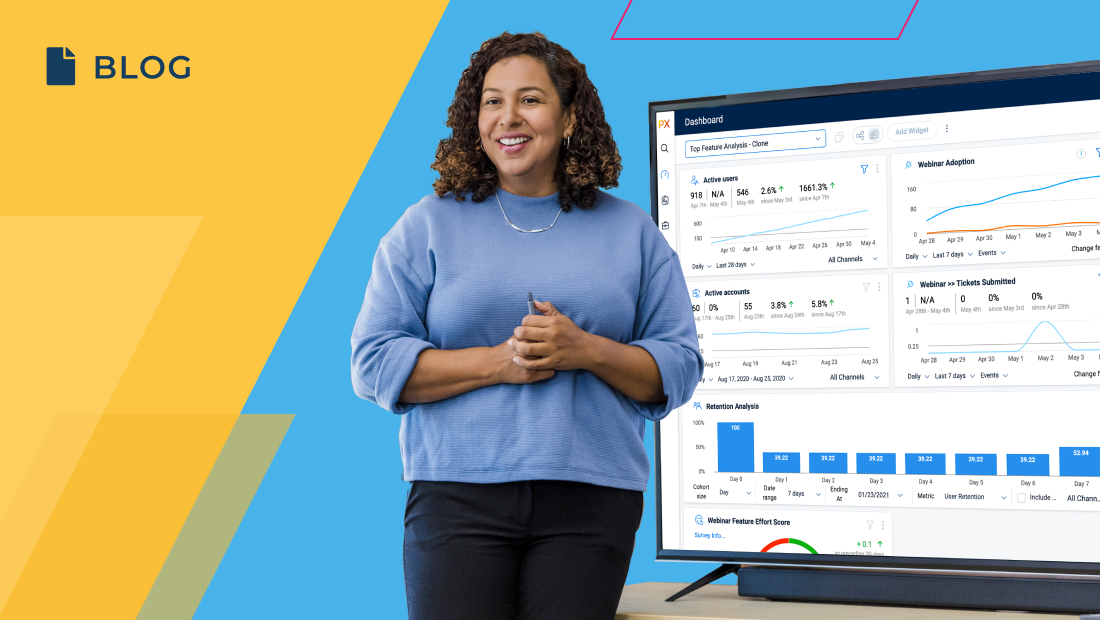What can the hit TV series Ted Lasso tell us about behavioral analytics?
The main character in the series, Ted Lasso is hired to coach an English soccer team. On paper, he looks like a terrible choice for a coach: 1) he’s a football (American football) coach who knows nothing about soccer; and 2) he’s an American who knows nothing about England. The team members in England think they know who he is based on his profile. But over the course of the series, Ted’s actions speak louder than words, and he wins over the team.
The lesson for product managers is that even though you may think you know who your users are based on information like demographics, you can only truly understand users by seeing them in action. While knowing the age, location, and job title of users is valuable information, it is essentially abstract because it is not anchored to the specific context of using your product.
By gathering data on the actions that users perform or don’t perform while they are actually in the product, you can get to the heart of the most important questions—are users extracting value from your product now, and how do you keep them coming back in the future?
Unlocking the power of behavioral analytics
Behavioral analytics is the process of analyzing user engagement data to understand how users are engaging with your product. By tracking the actions that users take in-product, and pairing that information with each user’s unique characteristics, you can discover usage patterns, habits, and preferences. This analysis will produce insights into how users find value, what challenges they face, and the role each feature plays in the overall product experience.
Behavioral analytics is powerful because it goes deeper than simple usage metrics like page views and downloads. While these common metrics are good indicators that engagement is happening, they provide very few clues as to why. Behavioral analytics allow you to construct a map of the user journey, revealing how one event leads to another. Mapping this journey will help you predict which actions lead to the outcomes you desire, like adoption, retention, and conversion. And in turn, this map will show you where and how you can optimize your product engagement to achieve those goals.
Getting started with behavioral analytics
Behavioral analytics isn’t the simplest strategy, but if you adhere to a set of core principles, implementation should go smoothly.
Set goals
Achieving your business goals is the end result of behavioral analytics, which is why you should begin with defining those goals and then work backwards to develop your approach. You need to ask what would help your business succeed, and what challenges are preventing that. Do you need to increase conversions? Are enough customers completing onboarding? Are you experiencing churn at the 3-month mark?
Once you have determined your most important goals, you will need to develop key performance indicators (KPIs) or metrics that most accurately reflect the areas you are trying to improve. Sometimes the metric can be obvious; for example, the number of conversions from a free trial to paid plan. But for other goals, it may take some trial and error to nail down the right metric. For example, successful adoption and retention may be determined by completely different actions, depending on the type of product—it could be number of downloads, number of messages sent, time spent in product, etc.
Determine events
Goal setting progresses naturally to the next step, which is determining key events. Events represent any action a user can perform in your product (like, creating an account, sending a message, or downloading a template). Every user might not perform every possible event that could happen within the product. But you should be able to form a solid idea of which event data is the most relevant for your goals.
In addition to determining the events, you need to assign event properties as needed. A property could be how long a user spends completing the action, how many times an event is performed, or whether an event is reactive or proactive.
Identify users
Behavioral analytics relies upon identifying unique users as they interact with your product. Users are identified by a set of relevant, predetermined characteristics. These could be demographic characteristics like age and location, but they don’t necessarily need to be. It may be more relevant to track characteristics like job function or role (ie, manager vs worker).
For user tracking to be effective, your product team needs to assign each user a unique identifier that won’t change over time as their status or contract changes, or as they move from platform to platform. If your product allows for anonymous use (ie, when a user is not logged in) you’ll need to account for that, too.
Map critical paths
Critical paths are the series of events or actions that users experience or perform within the product on their way to an outcome. Keep in mind these are outcomes for your business, not necessarily the user (though there is obviously some overlap). For example, the critical path for a video conferencing app could be Create Profile > Attend Meeting > Schedule Meeting > Use Advanced Features, with the outcome being Adoption and Retention.
Keep the number of events in the path as low as possible, especially at the beginning. Otherwise, you may find you are tracking event data that isn’t as important and your dataset will be noisy.
Track the behavior
Now it’s time to put it all together. Tracking is where you start gathering actual in-product data according to the critical paths that you’ve mapped out. Tracking is a team effort, because everyone across the organization is going to use this event data. That means product design, marketing, sales, and engineering should all have a seat at the table when decisions are being made.
In practical terms, the tracking is done in a spreadsheet or in a behavioral analytics platform. Sometimes called a taxonomy, this is a centralized place where data is organized and then reported out, which is another reason that all stakeholders need to understand the terminology and the results. Instrumentation within the product is very important here—if you need complicated, time-consuming data mining to arrive at a result, it may undermine the entire behavioral analytics initiative.
Reaping the rewards of behavioral analytics
After you have done the hard work of implementing behavioral analytics, the fun can begin. As the data starts to roll in, a picture will emerge of who your users really are, how they experience your product, and what you can do to create a more engaging product experience for them.
Segmentation
The combination of user data and event data creates a powerful tool for meaningful segmentation. You will be able to clearly differentiate how different types of users use your product in different ways, to accomplish different goals. Suddenly, your users are no longer unpredictable demographic profiles; they are actually people with motivations, challenges, and tendencies.
Armed with behavioral segmentation, you will be able to intelligently target external touches like marketing and sales, as well as hone your in-product engagements as users move along critical paths.
Customer journey
Now that you have real, organized, and interpretable data, customer journeys will become real-world experiences instead of theoretical models. Journey reports focus internal teams’ attention on various stages in the customer journey. One of the biggest challenges in product experience is the fact that various teams work in silos; having one single journey report for everyone means that everyone is finally on the same page. Now you have a unified strategy to help users reach the outcomes that mean success for your business.
How Gainsight PX can help
Gainsight PX provides a single, centralized platform with all the capabilities for behavioral analytics, all in one place. You’ll have the robust metrics you need to gather insights at any point along the customer journey. And the ability to generate personalized in-app engagement to act on the lessons learned about user behavior. All without needing to write a line of code.
Learn more about turning your product into a retention-generating machine. Schedule a demo today.


